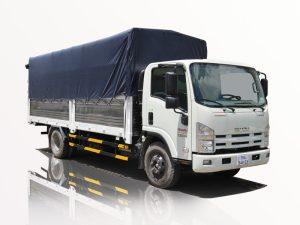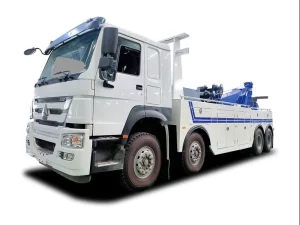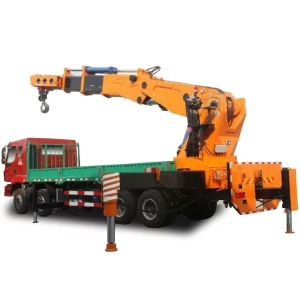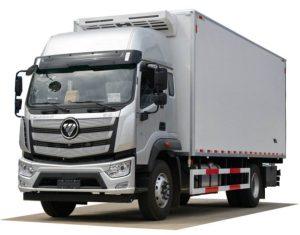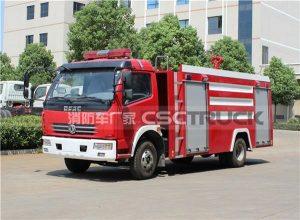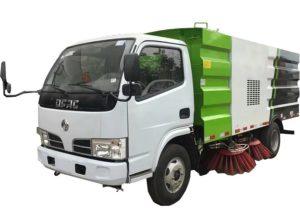Monday to Saturday - 8:00 -17:30
What is a Repo Truck Called? Understanding the World of Repossession Vehicles
In the world of finance and automotive industries, the term “repo truck” often surfaces, raising curiosity and questions among those unfamiliar with the concept. Repo trucks are specialized vehicles designed for the repossession of cars and other assets, primarily by lending institutions and private repossession agencies. In this article, we will delve into the details of what a repo truck is called, explore its design and functionality, and discuss its role in the broader context of the repossession industry.
Table of Contents
- What is a Repo Truck?
- Different Types of Repo Trucks
- How Repo Trucks Work
- The Repossession Process
- Key Features of Repo Trucks
- Choosing the Right Repo Truck
- Training for Repo Truck Operators
- Legal Aspects of Repossession
- FAQ
What is a Repo Truck?
A repo truck, short for repossession truck, is a specialized vehicle used by companies or agencies to recover automobiles or other collateral from borrowers who have defaulted on their loans. Such vehicles are typically equipped with unique features that facilitate the safe and efficient retrieval of assets without the need for a lengthy or complex process.
The Terminology Behind Repo Trucks
The term “repo” is short for repossession, and while “repo truck” is a commonly used name, these vehicles may also be referred to as “tow trucks” or “wrecker trucks.” However, the functionality and design of repo trucks are specifically tailored for repossession tasks, differentiating them from standard tow trucks.
Different Types of Repo Trucks
Repo trucks come in various types, each designed to handle specific repossession tasks more effectively. The main types include:
Flatbed Repo Trucks
Flatbed trucks are one of the most common types used in repossession. They feature a flat, open platform that allows the vehicle to be loaded onto it easily, making them suitable for transporting cars that may not be operational.
Wheel-Lift Repo Trucks
Wheel-lift trucks utilize a hydraulic lift system to raise the front or rear wheels of the vehicle off the ground. These trucks are often more compact and maneuverable than flatbed trucks, making them ideal for urban environments.
Integrated Repo Trucks
Integrated repo trucks combine features from both flatbed and wheel-lift designs. They can lift vehicles using a hydraulic system and also transport them on a flatbed platform, offering increased versatility.
How Repo Trucks Work
The mechanics behind repo trucks are designed for efficiency and reliability. Here’s how they typically operate:
The Tow Mechanism
Repo trucks are equipped with specialized towing mechanisms, such as hydraulic lifts or winches, that allow for the easy retrieval of assets. This technology ensures that a vehicular recovery can be performed quickly and safely.
Tracking and Technology
Modern repo trucks often come equipped with GPS tracking systems. This technology helps repossession agents locate vehicles more effectively, especially in urban areas where hiding a car is easier. Utilizing technology streamlines the repossession process.
The Repossession Process
The repossession process involves several steps, usually commencing when a borrower falls behind on payments. Here’s an overview of the systemic approach:
Step 1: Notification
The lender typically sends a default notice to the debtor before initiating repossession. This serves as a final warning that action will be taken if the debt is not addressed.
Step 2: Retrieval
Should the debtor fail to respond, a repossession agent will be dispatched with a repo truck to retrieve the vehicle. This may occur at the borrower’s residence, workplace, or even in parking lots.
Step 3: Securing the Vehicle
Once located, the repo agent will use the truck’s mechanisms to secure and transport the vehicle to a designated location. Precautions are taken to avoid damage to the vehicle during this phase.
Key Features of Repo Trucks
Repo trucks boast several key features that make them suitable for their purpose:
Specialized Equipment
Repo trucks often include hydraulic lifts, winches, and secure locking mechanisms to ensure a smooth repossession process.
Storage Capacity
Many repo trucks have extended rear storage capabilities, allowing for the transport of multiple vehicles or additional equipment required for repossession.
Choosing the Right Repo Truck
Selecting a repo truck can be daunting, especially for new repossession agencies. Here are some tips to consider:
Assess Your Needs
Determine which type of repossessions you will undertake most frequently. If you plan to recover non-operational vehicles, a flatbed truck may be ideal. Conversely, for operational vehicles, a wheel-lift truck can be more practical.
Budget Considerations
| Repo Truck Type | Estimated Cost | Maintenance Costs |
|---|---|---|
| Flatbed Truck | $30,000 – $60,000 | $500 – $1,000/year |
| Wheel-Lift Truck | $25,000 – $50,000 | $400 – $800/year |
| Integrated Truck | $35,000 – $70,000 | $600 – $1,200/year |
Training for Repo Truck Operators
Operating a repo truck requires specific skills and training to navigate complex situations. Here’s a breakdown:
Safety Protocols
Training programs should emphasize safety protocols to reduce risks during the repossession process. Operators must learn about securing vehicles safely and adhering to traffic laws.
Understanding Local Laws
Repo truck operators must be familiar with local and state repossession laws. Knowledge of legal stipulations helps ensure operations are conducted within the law.
Legal Aspects of Repossession
The repossession industry is heavily regulated, so understanding the legal framework is crucial:
Right of Repossession
Lenders possess a legal right to reclaim their property if payment obligations are not upheld. However, this right varies by jurisdiction and must be executed lawfully.
Do-Not-Touch Laws
Many states have “do-not-touch” laws that prevent repo agents from forcibly entering properties or using physical force to retrieve vehicles. Always ensure compliance with such regulations.
FAQ
1. What does a repo truck do?
A repo truck is used to recover vehicles or assets from borrowers who are in default on their loans. It is equipped with specialized mechanisms for efficient recovery.
2. How much does a repo truck cost?
The cost of a repo truck varies widely based on the type and features, generally ranging from $25,000 to $70,000.
3. Are repo trucks only used for cars?
No, while most commonly used for cars, repo trucks can also be used for motorcycles, boats, and other vehicles that may be collateral for loans.
4. Can repossession agents operate repo trucks without a license?
In most states, repossession agents are required to have appropriate licenses to operate repo trucks legally.
5. What happens to a vehicle after it’s repossessed?
Once repossessed, the vehicle is typically sold at auction, and the proceeds are applied to the outstanding loan balance.
6. Do repo trucks have special features?
Yes, repo trucks are outfitted with hydraulic lifts, tracking systems, and other specialized equipment that facilitates the quick and efficient recovery of vehicles.


